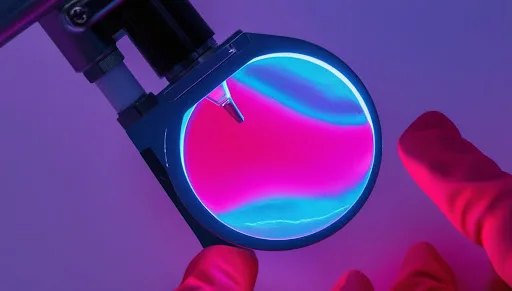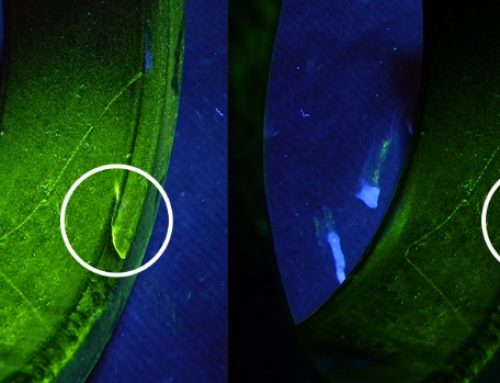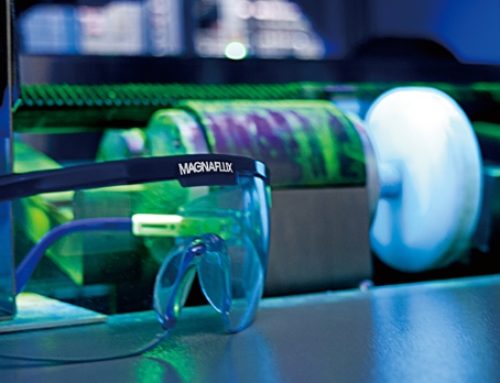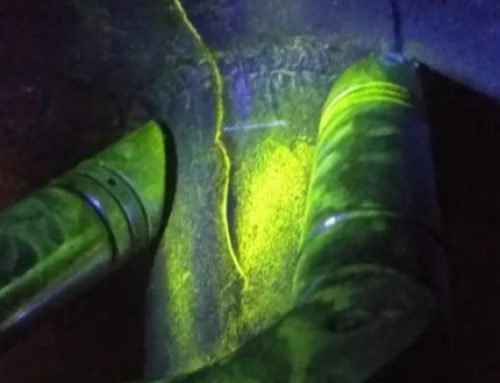Non-Destructive Testing (NDT) using UV flashlights is essential for industries like aerospace, manufacturing, and oil & gas. Proper maintenance of these UV flashlights is crucial to ensure accurate results and prolong their lifespan. In this article, we will explore practical maintenance tips, common issues, and effective solutions for NDT UV flashlights.
1. Why Maintenance is Crucial for NDT UV Flashlights

UV flashlights used in NDT are precision instruments. Regular maintenance:
- Ensures Accurate Inspections: Maintains consistent UV output for detecting defects.
- Extends Lifespan: Prevents premature failure of UV LEDs and batteries.
- Reduces Costs: Minimizes repair and replacement expenses.
2. Maintenance Checklist for NDT UV Flashlights
| Maintenance Task | Frequency | Purpose |
|---|---|---|
| Inspect Lens and Filters | Before each use | Ensures clear UV transmission. |
| Clean UV Lens | Weekly | Removes dust and contaminants. |
| Check Battery Health | Monthly | Prevents power fluctuations affecting UV output. |
| Test UV Intensity | Quarterly | Ensures compliance with NDT standards. |
| Inspect Casing for Damage | After field inspections | Prevents water or dust ingress. |
| Calibrate UV Output (if applicable) | Annually | Maintains consistent UV intensity for accurate results. |
3. Detailed Maintenance Tips for NDT UV Flashlights
a. Cleaning the UV Lens and Filters
- Why: Dust and oil can reduce UV transmission, causing false or missed indications.
- How:
- Use a soft microfiber cloth slightly dampened with isopropyl alcohol.
- Gently wipe the lens in a circular motion.
- Avoid abrasive materials that could scratch the lens.
- Tip: Avoid touching the lens directly with fingers to prevent smudges.
b. Checking Battery Health
- Why: Power fluctuations can lead to inconsistent UV output.
- How:
- Use a multimeter to check voltage levels. Replace batteries if they drop below 80% of rated capacity.
- For rechargeable models, ensure proper charging cycles and avoid overcharging.
- Tip: Keep spare batteries during long inspections.
c. Inspecting the Casing for Damage
- Why: Cracks or gaps can allow dust or moisture to affect internal components.
- How:
- Check for cracks, especially around seals and buttons.
- Replace O-rings if they appear worn or brittle.
- Tip: Store flashlights in a protective case when not in use.
d. Testing UV Intensity
- Why: UV intensity below the required level may cause false negatives.
- How:
- Use a UV radiometer to measure output at a fixed distance (usually 15 inches).
- Ensure it meets the required NDT standard (often 1,000 μW/cm2).
- Tip: Keep a record of intensity tests for compliance audits.
4. Troubleshooting Common Issues
| Issue | Possible Cause | Solution |
|---|---|---|
| Dim UV Output | Low battery or dirty lens | Replace batteries, clean lens, and check LED connections. |
| Inconsistent UV Beam | Faulty power connection or LED degradation | Inspect wiring, replace damaged LEDs. |
| Flickering Light | Loose battery contacts or damaged switch | Tighten contacts, replace switch if needed. |
| Overheating | Blocked heat vents or prolonged use | Allow to cool, clean vents, reduce continuous usage time. |
| Moisture Inside Casing | Damaged seals or exposure to water | Replace O-rings, dry thoroughly, inspect for cracks. |
5. Comparison: Maintenance of Rechargeable vs. Disposable Battery UV Flashlights
| Aspect | Rechargeable Batteries | Disposable Batteries |
|---|---|---|
| Cost | Higher upfront cost, lower long-term cost | Lower upfront cost, higher long-term cost |
| Maintenance | Requires regular charging and cycle management | Replace batteries when drained, minimal maintenance |
| Lifespan | Longer if properly maintained | Limited by battery availability |
| Environmental Impact | Lower due to reusable nature | Higher due to disposable waste |
| Recommended For | Frequent users and professional inspections | Occasional users and emergency kits |
6. Best Practices for Storing UV Flashlights

- Keep in a Dry Environment: Prevents moisture-related damage.
- Use Protective Cases: Shields against dust and impacts.
- Store Batteries Separately: Reduces risk of corrosion inside the flashlight.
- Avoid Direct Sunlight: Prevents UV LED degradation and battery overheating.
7. Calibration Tips for NDT UV Flashlights
Why: Calibration ensures that UV output remains within standard levels, providing accurate NDT results.
How to Calibrate:
- Use a calibrated UV radiometer.
- Measure UV intensity at a standard distance (typically 15 inches).
- Adjust the flashlight’s settings if it has built-in calibration.
- Record calibration results and keep documentation for compliance.
Tip: Schedule calibration annually or after 500 hours of use.
8. Summary: Key Maintenance Tips
- Clean Regularly: Focus on lenses and filters.
- Test UV Intensity: Use a radiometer quarterly.
- Inspect for Damage: Check casing, seals, and buttons.
- Battery Care: Replace or recharge promptly.
Consistent maintenance not only extends the lifespan of your NDT UV flashlight but also ensures reliable and accurate inspections. Implement these tips to keep your equipment performing at its best!



